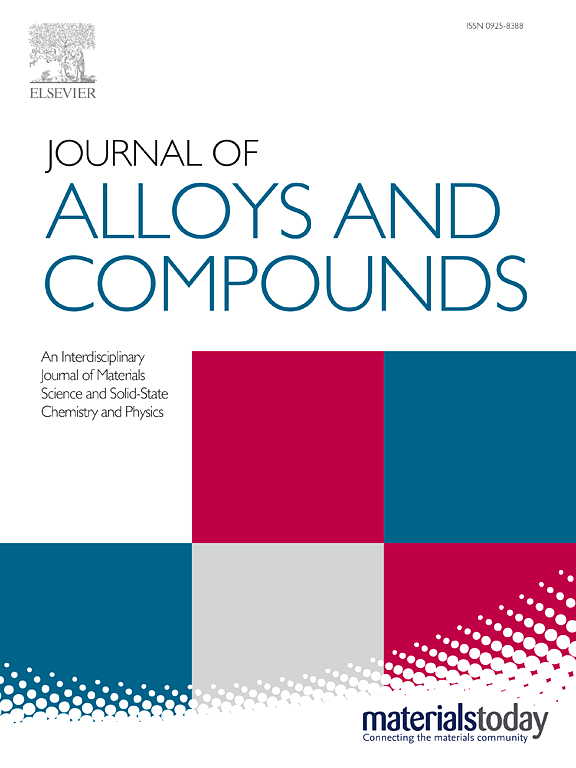Microstructure evolution upon directional solidification process of Nb-Si based ultrahigh temperature alloy
IF 5.8
2区 材料科学
Q2 CHEMISTRY, PHYSICAL
引用次数: 0
Abstract
The microstructure evolution was investigated in the directionally solidified (DS) Nb-22Ti-14.8Si-3Cr (at%) alloy. The directional solidification zone of the DS bar prepared by the crucible integral directional solidification can be divided into initial transient zone, steady state solidification zone and final transient zone from re-melted interface to the top of the DS bar, according to the microstructure characteristics including phase constituent, crystallographic orientation, microstructure morphology, quantitative metallography and composition with distance away from the bottom of the DS bar. In the initial transient zone, the increase of growth rate leads to the decrease of the average size of eutectic cells, average interlamellar spacing and average size of primary γ-Nb5Si3. The decrease of the area fraction of primary γ-Nb5Si3 in the transverse section is attributed to preferential growth among the primary γ-Nb5Si3 blocks. In the steady state solidification zone, the microstructures are well aligned and the halo NbSS (Nb solid solution) mainly exists. In the final transient zone, the area fraction and size of primary γ-Nb5Si3 increase as the hypereutectic degree increases with the accumulation of Ti, Cr, and Si contents. The contents of Ti and Cr in the DS bar increase in the initial transient zone, remain at a stable level in the steady state solidification zone, and then increase in the final transient zone with the distance away from the bottom of the DS bar.
Nb-Si基超高温合金定向凝固过程中的组织演变
研究了定向凝固(DS) Nb-22Ti-14.8Si-3Cr (at.%)合金的组织演变。根据离DS棒底部距离远近的显微组织特征,包括相组成、晶相取向、显微组织形态、定量金相和成分,坩埚整体定向凝固制备的DS棒从再熔界面到DS棒顶部的定向凝固区可分为初始瞬态区、稳态凝固区和最终瞬态区。在初始瞬态区,生长速率的增加导致共晶晶的平均尺寸、平均层间间距和初生γ-Nb5Si3的平均尺寸减小。初生γ-Nb5Si3在横截面上的面积分数减小是由于初生γ-Nb5Si3块体之间优先生长所致。在稳态凝固区,组织排列良好,主要存在晕状NbSS。在终过渡区,随着Ti、Cr和Si含量的增加,初生γ-Nb5Si3的面积分数和尺寸随着过共晶程度的增加而增大。随着离DS棒底部距离的增加,DS棒中Ti和Cr的含量在初始暂态区增加,在稳态凝固区保持稳定,在最终暂态区增加。
本文章由计算机程序翻译,如有差异,请以英文原文为准。
求助全文
约1分钟内获得全文
求助全文
来源期刊

Journal of Alloys and Compounds
工程技术-材料科学:综合
CiteScore
11.10
自引率
14.50%
发文量
5146
审稿时长
67 days
期刊介绍:
The Journal of Alloys and Compounds is intended to serve as an international medium for the publication of work on solid materials comprising compounds as well as alloys. Its great strength lies in the diversity of discipline which it encompasses, drawing together results from materials science, solid-state chemistry and physics.
 求助内容:
求助内容: 应助结果提醒方式:
应助结果提醒方式:


